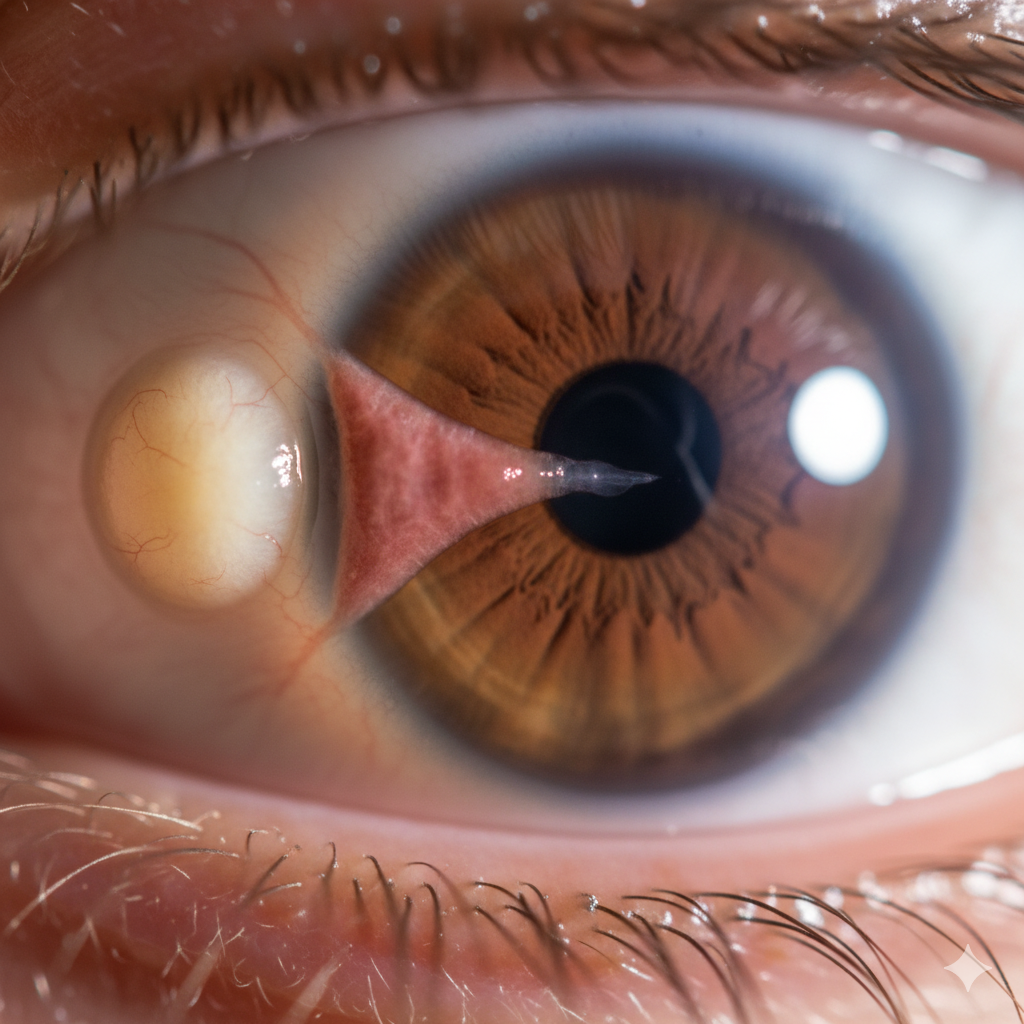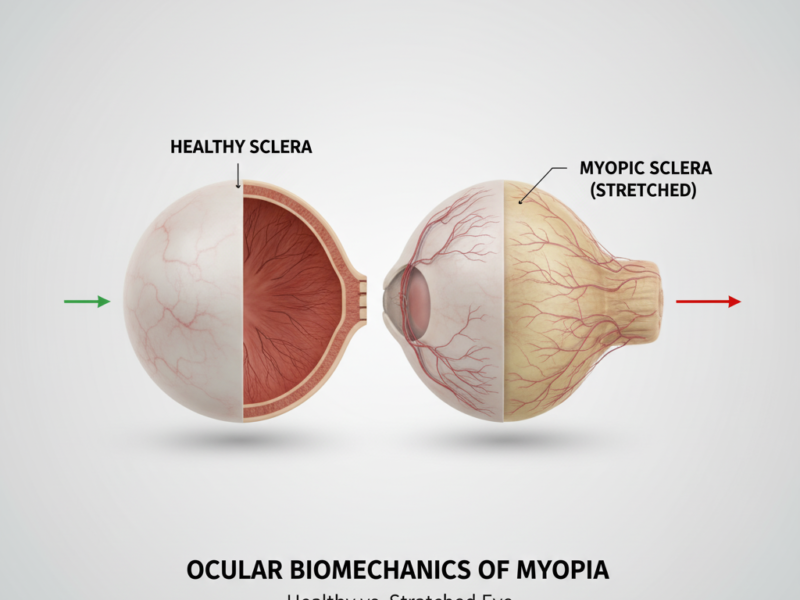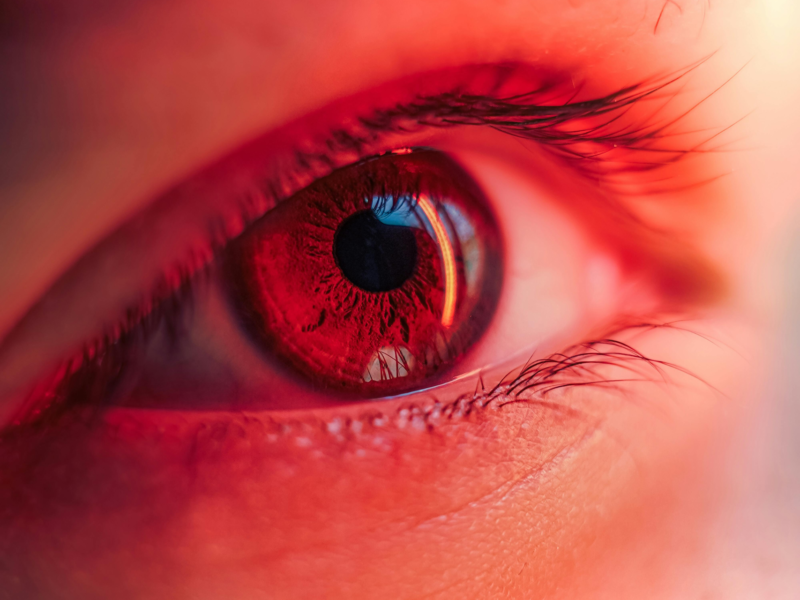The eyes are constantly exposed to the elements, and in areas with high UV radiation, dust, or wind, the delicate conjunctiva is under chronic attack. This continuous environmental stress often results in two common, yet cosmetically and functionally bothersome, conditions: Pterygium (often called Surfer’s Eye) and Pinguecula. While Pinguecula is a harmless, yellowish patch, Pterygium is a triangular, fleshy growth that can invade the cornea, blurring vision and requiring surgical removal.
For too long, the only advice given for these growths was simple sun protection or, ultimately, surgery. However, modern eye care, specifically through Pterygium and Pinguecula Biohacking, offers advanced, proactive protocols. This guide will move beyond basic sunglasses advice, focusing on molecular stabilization, environmental micro-management, and nutritional strategies to reverse the underlying pathology and halt recurrence, aiming to keep your eyes clear and comfortable without invasive procedures.
1. Defining the Enemy: Pterygium vs. Pinguecula
While they look similar and often appear together, their structure and threat level are distinct. Biohacking protocols must differentiate between them for targeted results.
Pinguecula: The Yellow Patch
- Definition: A yellowish, slightly raised patch that typically forms on the conjunctiva, usually on the side closest to the nose (nasal).
- Pathology: It is a degeneration of the collagen fibers and elastic tissue of the conjunctiva due to chronic exposure. It never grows onto the cornea.
- Symptoms: Mainly cosmetic, but can cause localized dryness and irritation.
Pterygium: The Fleshy Growth
- Definition: A fleshy, wing-shaped growth of conjunctival tissue that usually starts as a pinguecula.
- Pathology: The key difference is that a pterygium actively invades the cornea. It is thought to involve complex cellular migration and abnormal tissue remodeling.
- Consequences: If it grows into the central visual axis, it can induce significant astigmatism and ultimately block vision, necessitating surgical removal.
2. The Root Cause: Oxidative Stress and UV Radiation
Both conditions are classic examples of photoaging and elastotic degeneration. Understanding the environmental triggers is the first step in successful Pterygium and Pinguecula Biohacking.
The UV Damage Mechanism
Ultraviolet radiation (UVR) is the primary causal agent.
- DNA Damage: UV light, particularly UVB, causes damage to the DNA of conjunctival cells, leading to abnormal cellular repair and uncontrolled proliferation.
- Free Radical Generation: UV exposure generates Reactive Oxygen Species (ROS) in the ocular surface tissues, overwhelming the natural antioxidant defenses and causing the structural collagen and elastic fibers to break down (elastosis).
Chronic Micro-Trauma and Tear Film Instability
Beyond UV, mechanical stress plays a role, creating a perfect storm for tissue change:
- Wind and Dust: Constant wind and dust exposure cause micro-trauma and accelerate the evaporation of the tear film.
- Dry Eye State: This instability leads to a cycle of inflammation, which further encourages the abnormal tissue remodeling seen in both pterygium and pinguecula.
Did You Know?
The nasal side of the eye (near the nose) is more prone to these growths because the nose acts as a focus point, concentrating peripheral UV light onto that specific area of the conjunctiva. This effect is why wraparound sunglasses are a crucial **Pterygium and Pinguecula Biohacking** strategy.
3. Environmental Biohacking Protocols
The most effective and low-cost aspect of Pterygium and Pinguecula Biohacking is aggressive environmental control—creating a protective microclimate for your eyes.
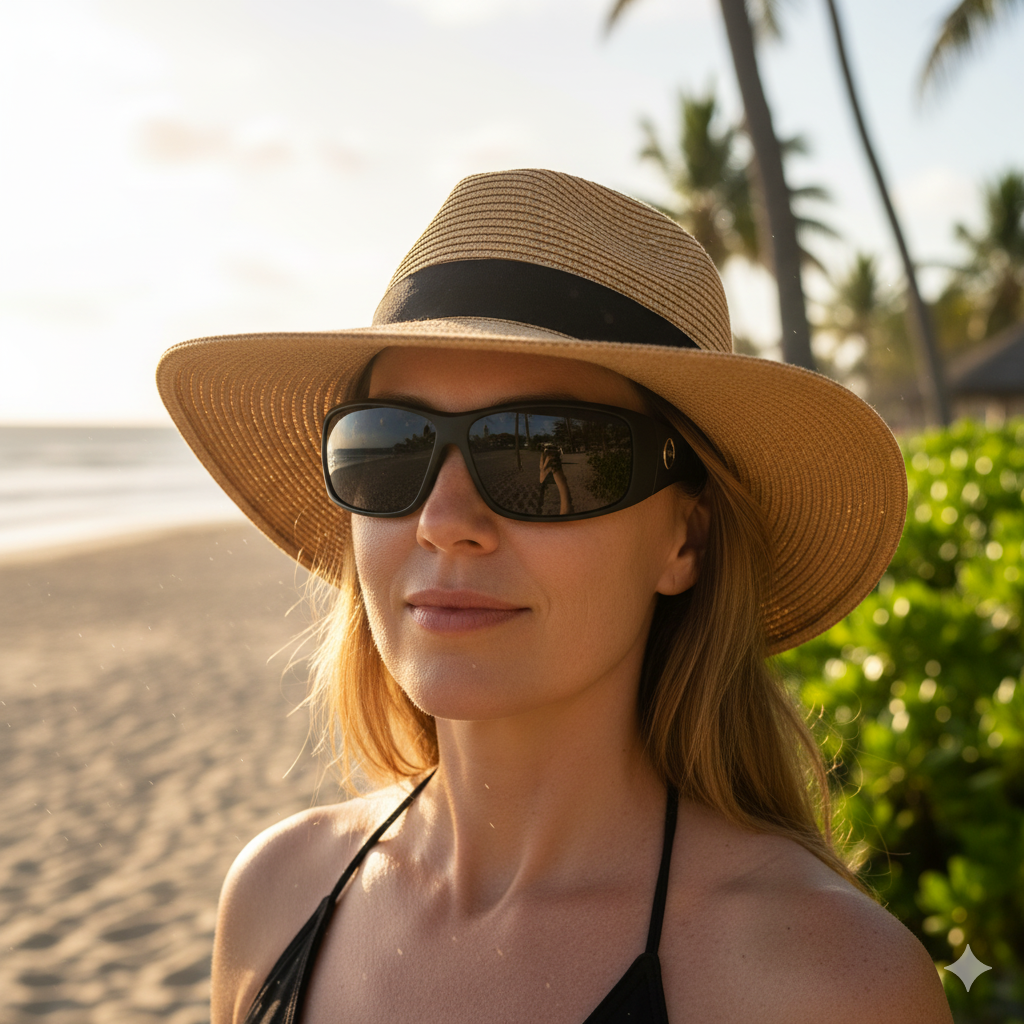
Protocol 3.1: Complete Light Spectrum Control
Standard sunglasses are not enough; a 360-degree approach is required to block UV and peripheral light leakage.
- Wraparound (Lifestyle) Sunglasses: These glasses physically wrap around the temples, preventing UV light and wind from entering the eye laterally (which is a common entry point for harmful rays). Choose lenses that block 99-100% of UVA/UVB.
- Wide-Brimmed Hats: A physical barrier, such as a hat with a brim of 3 inches or more, can reduce exposure by an additional 50%, particularly when the sun is overhead.
Protocol 3.2: Ocular Surface Hydration Management
Maintaining a stable, thick tear film prevents inflammation caused by evaporation and micro-trauma.
- Preservative-Free Artificial Tears: Use non-preserved tears frequently throughout the day, especially before and after exposure to dry or windy conditions.
- Humidity Control: Use humidifiers in dry climates or during winter months when indoor heating drastically lowers air moisture, which reduces the evaporative stress on the ocular surface.
- Moisture Chamber Eyewear: For severe cases or high-exposure professions (e.g., sailing, motorcycling), specialized moisture chamber glasses can seal the area around the eyes, creating a perpetually high-humidity microclimate.
4. Topical and Pharmacological Bio-Modulation
These protocols focus on utilizing the tear film and topical drops to manage inflammation, reduce redness, and prevent vascularization (abnormal blood vessel growth).
Protocol 4.1: Anti-Inflammatory Topical Agents
The goal is to calm the chronic inflammation that fuels the progression of both growths.
- Low-Dose Topical Steroids: Used under strict clinical supervision, brief courses of mild topical steroids may shrink highly inflamed pterygium or pinguecula by suppressing the inflammatory cascade. This is a powerful, short-term biohack.
- Cyclosporine/Lifitegrast (Immunomodulators): These prescription drops are typically used for severe dry eye, but their ability to modulate T-cell activity and reduce ocular surface inflammation makes them effective in stabilizing the conditions and minimizing irritation.
Protocol 4.2: Managing Cosmetic Vascularity
One of the most annoying symptoms is chronic redness (hyperemia) caused by enlarged vessels near the growth.
- Alpha Agonists (Redness Relievers): While common redness relievers are discouraged due to rebound hyperemia, newer, targeted alpha-agonists (like Brimonidine 0.025%) can safely and effectively reduce visible redness by constricting blood vessels, improving the cosmetic appearance without the rebound effect.
5. Nutritional and Systemic Biohacking
Systemic protocols use internal defenses to neutralize the oxidative stress caused by UV and inflammation, thereby stabilizing the conjunctival tissue from within.
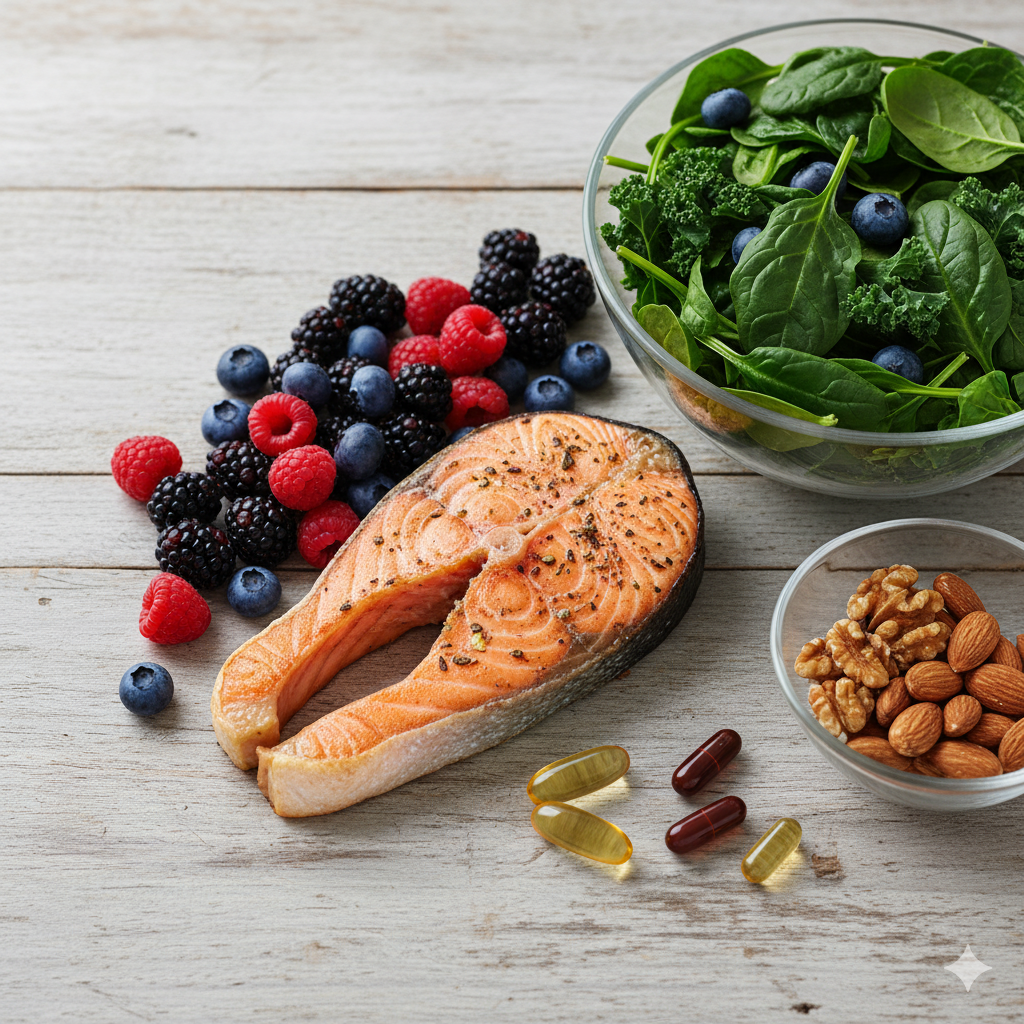
Protocol 5.1: High-Dose Antioxidant Loading
The macular pigment carotenoids are also vital for overall conjunctival and corneal health.
- Lutein and Zeaxanthin: Similar to AMD prevention, high intake of these carotenoids (10 mg Lutein/2 mg Zeaxanthin) boosts the eye’s natural UV-absorbing and antioxidant capacity, protecting tissues from the cellular damage that starts the growth process.
- Astaxanthin: Known as the most powerful carotenoid antioxidant, Astaxanthin has been shown to cross the blood-retinal barrier and offers superior protection against photo-oxidative stress compared to Vitamin E.
Protocol 5.2: Omega-3 Anti-Inflammatory Foundation
Chronic inflammation is the link between environmental stress and tissue growth. Omega-3s disrupt this link.
- EPA and DHA: Supplementation with a high-quality, high-potency Omega-3 supplement (targeting at least 1,000 mg of EPA/DHA combined daily) reduces the production of pro-inflammatory eicosanoids, calming the ocular surface environment.
- Dietary Focus: Increase consumption of deep-sea fatty fish, flaxseeds, and walnuts to support internal anti-inflammatory pathways.
6. Surgical Intervention and Recurrence Prevention
When Pterygium and Pinguecula Biohacking protocols fail to prevent vision-threatening growth, surgery is required. However, the subsequent biohacking protocols for preventing recurrence are critical for long-term success.
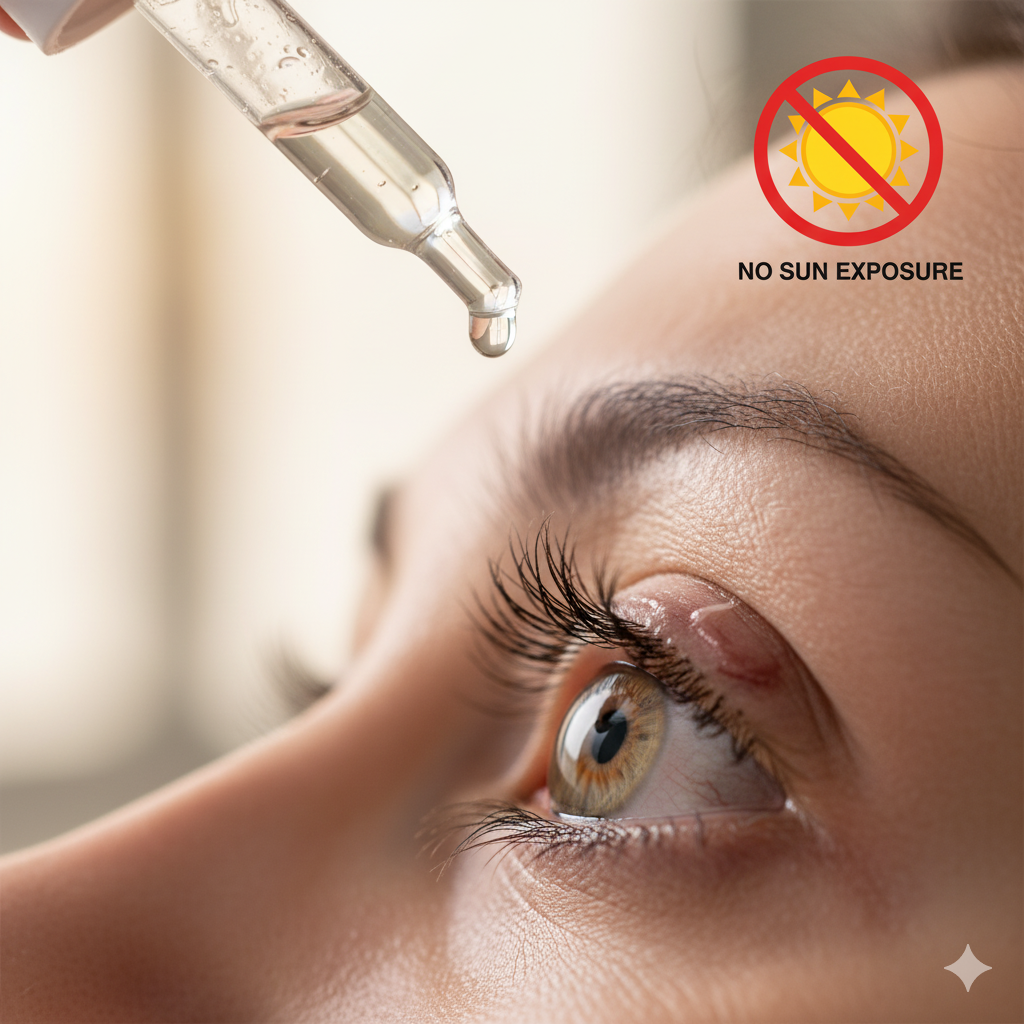
Surgical Techniques for Minimal Recurrence
Traditional surgery had high recurrence rates (up to 50%). Modern techniques significantly lower this risk:
- Conjunctival Autograft: The gold standard. After removing the pterygium, a piece of healthy conjunctiva is transplanted from the same eye to cover the surgical defect. This healthy tissue physically blocks abnormal growth factors.
- Adjunctive Therapy (Mitomycin C): Topical anti-metabolites like Mitomycin C (MMC) are sometimes applied briefly during surgery to suppress the aggressive cellular proliferation that causes recurrence, reserved for high-risk patients.
Protocol 6.1: Aggressive Post-Operative Biohacking
The first six months post-surgery are the most critical for recurrence prevention.
- Rigid Environmental Control: Strict adherence to wraparound sunglasses and hat usage is mandatory, regardless of weather.
- Tear Film Stabilization: Continued use of preservative-free tears and, often, prescription anti-inflammatory drops (like Cyclosporine or short-term steroids) is essential to ensure the healing ocular surface remains calm and hydrated.
- Nutritional Support: High-dose Vitamin C and Zinc supplements can aid in collagen synthesis and wound healing, reinforcing the structural repair initiated by the surgery.
Frequently Asked Questions (FAQ) about Pterygium and Pinguecula Biohacking
Q: Can a pinguecula turn into a pterygium? A: Yes. A pterygium often begins as a pinguecula. The pinguecula represents the initial damage (collagen degeneration), and the pterygium represents the subsequent, aggressive tissue growth and invasion of the cornea. Biohacking protocols aim to stop the process before it progresses past the pinguecula stage.
Q: Do I need surgery for a pinguecula? A: Almost never. Pingueculae are typically only removed for severe, chronic irritation that fails all topical treatments, or for significant cosmetic reasons. They do not cause vision loss.
Q: Are there any topical drops that can dissolve a pterygium? A: No. Once the fleshy tissue has invaded the cornea, it is a structural change that requires surgical removal. Biohacking methods are focused on slowing or stopping growth and preventing recurrence, not dissolving existing tissue.
Q: How long does it take to see results from nutritional biohacking protocols? A: Systemic changes take time. You may notice reduced chronic redness and irritation within 4-8 weeks, but true stabilization and strengthening of the conjunctival tissue through Lutein, Zeaxanthin, and Omega-3s can take 3-6 months.
Conclusion: Taking Control of Ocular Surface Health
Pterygium and Pinguecula are the eye’s painful signposts of environmental damage and inadequate protection. By embracing Pterygium and Pinguecula Biohacking—moving beyond passive protection to active modulation—you can take powerful steps to stabilize the ocular surface. This integrated approach, combining aggressive UV and microclimate control with targeted nutritional and anti-inflammatory support, offers the best chance of preventing the need for surgery and ensuring your eyes remain comfortable, clear, and healthy for life.

